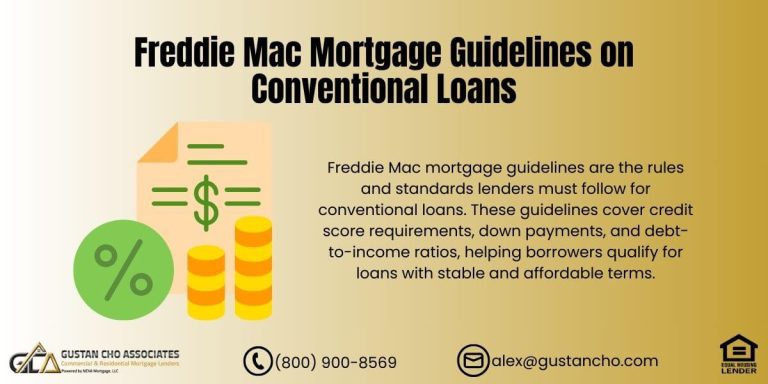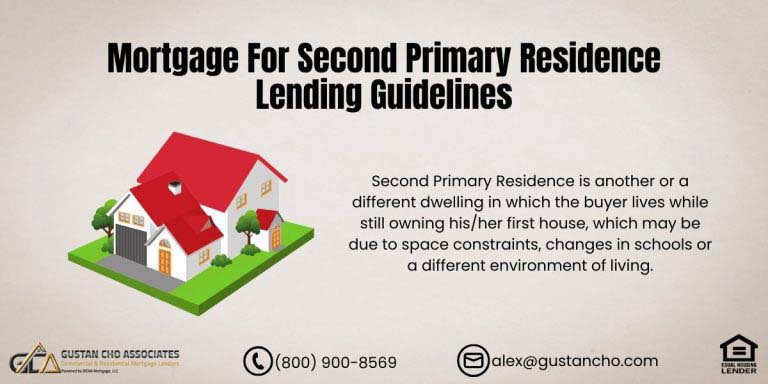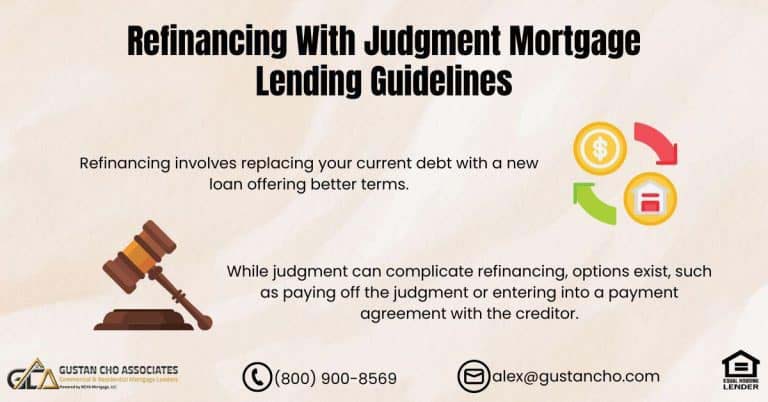In this article, we will cover qualifying for the Profit and Loss Statement Only Mortgage Loans with no-income verification and limited documents. Profit and loss mortgage loans, also referred as P and L statement only mortgage loans, only requires a profit and loss statement prepared by a Certified Public Accountant. No federal income tax returns, no W2s, no 1099s, and no bank statement deposits for the past 12 months.
Self-employed individuals experience many challenges when trying to obtain a mortgage to buy their dream home or refinance an existing loan. This issue is largely brought about by the fact that they need proper income documentation.
For many years after the 2008 financial crisis, no-doc and stated income mortgage loans went extinct. Now, no-income documentation mortgage loans are back. No-doc mortgages, 1099-income only loans, DSCR loans, stated-income mortgages, and P and L statement only mortgages are offered at Gustan Cho Associates. In the following paragraphs, we will cover profit and loss statement only mortgage loans with limited to no-income documentation.
Can You Get a Mortgage With Just a Profit and Loss Statement Only?
Well, there is a solution: Profit & Loss mortgages. These loans make the mortgage process so much easier for self-employed borrowers, as the only documents required are profit and loss statements.
Now, in this article, we will explore the ins and outs of P&L-only mortgages, what they are, their requirements, and how they can benefit self-employed individuals and business owners when it comes to financing their investments.
When applying for a traditional mortgage, you need documents like paystubs and W-2 forms, which self-employed individuals may not have. So, who benefits from profit and loss only mortgage loans? What type of individuals need the P & L statement only mortgage loans? Self-employed borrowers are the best ideal candidates for profit and loss statement only mortgage loans.
No Tax Returns? No Problem! Get a Mortgage Using Just a Profit & Loss Statement
Apply For A Mortgage Loan Today!
What Are Profit and Loss Statement Only Mortgage Loans?
Profit and loss statement only mortgage loans is a type of loan product where the borrower is only required to provide their profit and loss statements rather than formal documents. This loan is ideal for self-employed individuals and business owners who may not have the documents needed when applying for any type of traditional mortgage.
Profit and Loss Statement Only Mortgage Loans are for self-employed borrowers. Income tax returns and other forms of income verification documents are not required.
One-year profit and loss statement of the borrower certified by a certified public accountant is what the lender will base the qualified income for the mortgage loan. Also known as stated income loans, these mortgages are flexible compared to conventional loans and are designed to accommodate even the most unique situations of self-employed borrowers. However, these loans come with stricter credit and asset requirements; depending on your situation and the lender, the interest rate might be higher.
What Do Profit and Loss Statements Show?
The profit and loss statement shows the business’s net income by considering its revenue and offsetting expenses. Self-employed individuals or business owners can use this statement to evaluate the business’s profitability, which, in turn, can help determine how to improve it through revenue and expense manipulation. The bank statements and income tax returns don’t accurately reflect a self-employed individual’s income, given that deducting business expenses reduces the owner’s income tax liability.
What Are The Eligibility Requirements For Profit and Loss Statement Only Mortgage Loans?
To qualify for a profit and loss statement only mortgage loans, personal or business federal income taxes or income documents is not required. The mortgage process for profit and loss statement only mortgage loans is very simple and streamline. Profit and loss statement only mortgage loans require a one year, year-to-date audited profit and loss statement by a certified public accountant. The P and L statement is used to determine income on the mortgage loan. In the sections below, we will go over the documents and steps of the mortgage process on a typical profit and loss statement only mortgage loan.
How Is Proof of Income Determined on P & L Statement Mortgages
Profit and loss statement only mortgage loans require a 20% down payment and three to 18 months of reserves. The amount of reserves required is dependent on the borrower’s credit scores and credit profile.
The profit and loss statements must be produced, certified, and signed by a certified public accountant. No other income documentation is required. If you are a business owner, you must have been in business for at least two years.
What Are The Credit Score Requirements on Profit and Loss Statement Only Mortgages?
There are many non-QM mortgage lenders that offer profit and loss statement only mortgage loans. Each individual mortgage lender has their own eligibility requirements. Gustan Cho Associates are mortgage brokers licensed in 48 states including Washington, DC, Puerto Rico, and the U.S. Virgin Islands with lending partnerships of 220 wholesale lenders.
Adequate assets – having a significant amount of assets will also boost your chances of qualifying massively. So, ensure that you prove the existence of cash reserves and investments.
We have dozens of partnerships with dozens of wholesale lenders offering P and L statement only mortgage loans. Most wholesale lenders will require a decent credit score to qualify for a P&L mortgage. Borrowers certainly need to have a good credit score of between 600 – 700 FICO, depending on the wholesale lender.
Self-Employed Borrowers Benefit From P&L-Only Mortgages?
A minimum down payment – you will need to have a down payment if you are to qualify for the P&L mortgage. These loans have a lower loan-to-value ratio, which usually means you will have to put down some money to be eligible for the loan.
The lender may also require you to provide more documentation, such as business licenses and other financial statements, which will all assist in determining your creditworthiness.
Now, you can qualify for up to $6 million, where some lenders may give you $500,000 cashback. Some lenders may also offer adjustable-rate mortgages or interest-only options for P&L mortgages, which could mean lower payments in the beginning and higher payments in the later years. There are many ways self-employed borrowers can benefit from applying for a P&L-only mortgage. They include the following:
Simplified Documentation
We’ve already mentioned, P and L statement mortgages only require the borrower to provide a profit and loss statement as proof of income, which means less effort when applying for the mortgage.
Flexibility
P and L statement only mortgages are designed to accommodate any self-employed borrower, regardless of their specials situations, and may offer more flexibility in terms of their qualifications.
Ability To Refinance
P&L-only mortgages are also a good option if you are a self-employed borrower looking to refinance an existing mortgage.
Accessibility
As previously mentioned, self-employed individuals experience challenges when applying for traditional mortgages. Now, when it comes to P&L mortgages, they are designed to make it easier for them to apply. As long as one provides their P&L statements and proves their creditworthiness, they can get the loan, which can be processed quickly compared to traditional mortgages, depending on the lenders.
Lower Rejection Rate
What one lender may require from you to qualify for a loan might be different from what another lender asks. Even though we have stated the P & L income statements are the only ones used, you may find lenders who would request additional documentation. The rejection rate for a P&L-only mortgage is pretty low, making it an ideal choice for self-employed individuals who typically won’t qualify for a traditional mortgage.
Things To Keep In Mind When Applying For a P&L Mortgage
There are a few things that you have to remember if you are planning to apply for a P&L loan. As these loans are considered higher risk than conventional, they usually come with higher interest rates, which is how the lenders protect themselves from the risk. The requirements may vary with the lender.
Be prepared for stricter credit and asset requirements compared to traditional mortgages. It is also recommended to consider the long-term implications of the loan, especially if it comes with a higher interest rate.
How will the loan affect your finances in the long run? Even though we have stated the P & L income statements are the only ones used, you may find lenders who would request additional documentation. When looking for a P&L mortgage lender, you must consider their experience and reputation. Also, lenders with expertise in handling P&L mortgage applications are highly recommended. Do your research and compare the terms and conditions before making your decision. Shop around until you get the best possible deal!
Getting Approved For Profit and Loss Statement Only Mortgage Loans
Before you proceed and take on any type of traditional or non-QM mortgage loans, consult with a financial advisor and the advise of several mortgage loan professionals to compare and contrast the best mortgage loan option suited for you. The team at Gustan Cho Associates has a national reputation of being being able to do mortgage loans other lenders cannot do.
We have hundreds of traditional and non-QM mortgage loan options for owner-occupant, second homes, and investment properties.
Licensed in 48 states, including Washington, DC, Puerto Rico, and U.S. Virgin Islands, the support, operations, and licensed personnel at Gustan Cho Associates is available seven days a week, including evenings, weekends and holidays. It’s always a good idea to consult a mortgage broker or a financial adviser whenever you are planning to apply for a mortgage, especially a P&L-only mortgage. The reason is that these professionals have much knowledge on the subject, so they can help you understand the terms and conditions of the lender, and thereby, they can make the right decision.
our Hard Work Pays Off – Get a Mortgage with Just a P&L Statement
Apply Today and See If You Qualify
FAQ: Profit and Loss Statement Only Mortgage Loans
1. What are Profit and Loss Statement Only Mortgage Loans?
Profit and Loss Statement Only Mortgage Loans, also known as P&L mortgages, are a type of loan product specifically designed for self-employed individuals and business owners. These loans require only a one-year profit and loss statement certified by a Certified Public Accountant (CPA) as proof of income, eliminating the need for traditional income documentation like tax returns, W2s, or 1099s.
2. Who benefits from Profit and Loss Statement Only Mortgage Loans?
Self-employed individuals and business owners who may have difficulty providing traditional income documentation benefit the most from P&L mortgages. These loans offer flexibility and accommodate unique financial situations that traditional mortgages may not.
3. What do Profit and Loss Statement only mortgage loans show?
Profit and Loss Statements provide a snapshot of a business’s financial performance by detailing its revenue and expenses, ultimately showing its net income. For self-employed individuals, these statements accurately reflect their income more than traditional income documentation, which may not account for business deductions.
4. What are the eligibility requirements for Profit and Loss Statement Only Mortgage Loans?
To qualify for a profit and loss statement only mortgage loans, borrowers typically need to provide a one-year, year-to-date audited profit and loss statement by a CPA. Additionally, borrowers may need to demonstrate a stable business history of at least two years and meet credit score and asset requirements set by the lender.
5. How is proof of income determined on P&L Statement Mortgages?
Income for P&L mortgages is determined solely based on the certified profit and loss statements provided by a CPA. Borrowers may also need to meet down payment and reserve requirements, with the specific amounts varying depending on credit scores and lender policies.
6. What are the credit score requirements on Profit and Loss Statement Only Mortgages?
Credit score requirements for P&L mortgages may vary among lenders but generally range from 600 to 700 FICO scores. Additionally, borrowers with higher credit scores and substantial assets may have better chances of qualifying for these loans.
7. How do self-employed borrowers benefit from profit and loss statement only mortgage loans?
Self-employed borrowers benefit from P&L-only mortgages in several ways:
- Simplified Documentation: Only a profit and loss statement is required, streamlining the application process.
- Flexibility: These loans are designed to accommodate various financial situations, offering more flexibility in qualifications.
- Accessibility: P&L mortgages make it easier for self-employed individuals to access financing than traditional mortgages.
- Lower Rejection Rate: P&L-only mortgages typically have a lower rejection rate, making them a viable option for those who may not qualify for traditional loans.
8. What should borrowers keep in mind when applying for a P&L Mortgage?
Borrowers should be aware of higher interest rates, stricter credit and asset requirements, and potential long-term implications of the loan. Researching lenders, comparing terms, and consulting with financial advisors or mortgage brokers is essential to find the best possible deal.
9. How can borrowers get approved for Profit and Loss Statement Only Mortgage Loans?
Before applying for any mortgage, especially P&L-only mortgages, borrowers should consult with financial advisors and mortgage professionals to explore their options thoroughly. Working with experienced mortgage brokers like Gustan Cho Associates can help borrowers navigate the complexities of P&L mortgages and find the right loan for their needs.
Contact us at Gustan Cho Associates at 800-900-8569. Text us for a faster response. Or email us at gcho@gustancho.com. The team at Gustan Cho Associates is available 7 days a week, on evenings, weekends, and holidays.
This blog about Profit and Loss Statement Only Mortgage Loans was updated on February 17, 2025.









